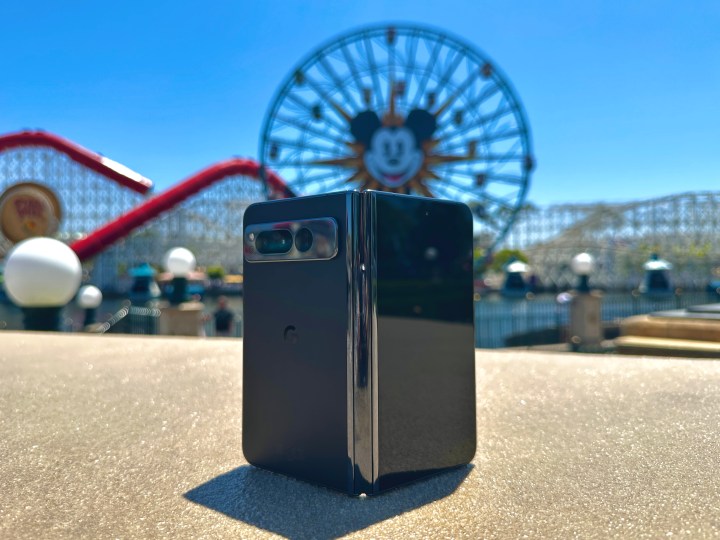
Google’s first foldable phone, the Google Pixel Fold, has left a pretty solid first impression. Not just because it’s a Pixel — with all its camera and software goodness — that can also pull off a foldable trick. Instead, Google really surprised with sleek hardware that is exquisitely thin.
In Google’s own words, the Pixel Fold has a “thinner profile than any other foldable phone” while also offering the “most durable hinge out there.” But it looks like all the effort that went into achieving a svelte profile also took a toll on the phone’s durability — specifically, its frame.
JerryRigEverything recently put the Pixel Fold through his brutal durability test, and it failed the stress and bend test quite spectacularly. While the hinge held its own against aggressive dust exposure and external pressure, it was the metallic frame that bent and broke near the antenna line. And it did so from all sides.
Now, you likely won’t face a scenario in real life where you need to open the phone and apply pressure on its hinge ridge from the opposite end. But you might want to be careful about keeping the phone open and mistakenly placing a heavy object over it. Or maybe, just sitting on it.
Foldable phones are notoriously fragile, and even a small misalignment in the hinge parts or the frame could permanently impair it. Either the phone refuses to fully open, or the display gives up — or sometimes, both, without any signs of visible external damage.
Samsung’s foldable phones held their own against JerryRigEverything’s stress tests thanks to a robust frame and solid hinge mechanism. But the Pixel Fold has more problems than just a fragile frame prone to breaking under practical stress. To start, the surrounding metallic frame can be seen bending and breaking alongside both axes.
Unlike its Samsung rival, the Pixel doesn’t appear to have a locking mechanism to prevent the phone from unfolding in the reverse direction or beyond its natural 180-degree form factor. But there’s still a threshold, and once it’s pushed beyond that, the Pixel Fold refuses to close shut even in its natural half-rotation cycle.
With the frame breaking spectacularly, even the battery pack on that side bent, which is yet another serious hazard.
All this fragility — just to achieve a thin form factor!
So, here’s our word of advice. If you spent $1,800 on Google’s shiny foldable, make sure to handle it delicately and pay special attention to it in unfolded form — because that’s when it’s susceptible to stress-induced damage.

But there’s more to the Pixel Fold durability woes than a majestic failure in a simulated durability test. Multiple buyers and journalists have reported that their Pixel Fold’s screen gave up out of nowhere and that the hinge makes odd noises when the phone is unfolded or closed.
Google proudly says that the Pixel Fold is “the thinnest of its kind on the market” and also made special mention of the “heavy-duty stainless steel” that went into making the hinge. But it seems Google should also have paid attention to the rest of the frame’s integrity instead of relentlessly pursuing the thinness vanity.
After all, buyers would prefer a slightly thicker phone that doesn’t give up in a few months under slight pressure rather than picking a $1,800 looker that is uncannily susceptible to such nasty damage.
Editors' Recommendations
- Nomi is one of the most unsettling (and amazing) apps I’ve ever used
- Something strange might happen to the Google Pixel Fold 2
- The Honor V Purse is the most unusual foldable I’ve ever used
- 5 phones you should buy instead of the Google Pixel 8
- This new folding phone costs less than half the price of the iPhone 15 Pro Max

